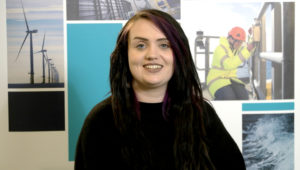
The Offshore Renewable Energy (ORE) Catapult is urging the offshore wind sector to sign up to a world-first data collection platform that aims to vastly reduce subsea cable failures.
In a global industry first, ELECTRODE will track cable failure trends and service downtime, as well as the effectiveness of current methods of monitoring, detection and response.
Subsea cable failures account for the single biggest insurance cost for the industry, making up 75-80% of claims in the UK.
It can take an average of two months to repair a failed cable, costing more than £10 million in costs and lost power generation.
To date, efforts to reduce failures have been hampered by a lack of available data, but ORE Catapult, the UK’s leading technology innovation and research centre for offshore renewables, believes greater collaboration could pave the way for radical advances.
It is calling upon the offshore wind industry to support the new ELECTRODE initiative, which will collect data anonymously, while allowing trend analysis to develop.
The programme is being rolled out across Europe initially, with ambitions for it to become a global benchmarking system for offshore wind cable failure in the near future.
Funded through the Offshore Wind Innovation Hub (OWIH), ELECTRODE has launched with a workshop organised by ORE Catapult and the Carbon Trust.
Ten offshore wind industry players are now signed up to the programme, together with a major insurance group that covers offshore wind assets. It is being operated in a similar way to ORE Catapult’s SPARTA model.
Charlotte Strang-Moran, ELECTRODE Lead at ORE Catapult, said the programme had the potential to be a game changer for the industry.
“In order for us to make advancements in cable failure, we need to know what the common issues are and where improvements should be targeted,” she said.
“ELECTRODE will very quickly enable us to start identifying key and recurring problems, which will bring huge benefits to the whole industry.
“The anonymous data will provide an accurate trend analysis, helping to accelerate innovation and improvements in reliability, which will reduce the costs of downtime, repairs and insurance.”
“The potential for the UK supply chain is enormous,” said Dr Philip Orr, managing director of Synaptec.
“By removing the unknowns, ELECTRODE will help the supply chain to identify where they can best develop and upgrade systems and procedures.
The statistical data that ELECTRODE provides will strengthen the business case for better condition monitoring. As a result, our technology can support operators to reduce the risk and causes of cable damage through accurate and detailed modelling of subsea cable performance.”
ORE Catapult is now eager for other industry partners – especially wind farm operators – to get involved, emphasising that anonymity and security of commercial data are two of the core principles of the platform.
Chris Hill, operational performance director at ORE Catapult, said ELECTRODE would draw on their experience of implementing other successful benchmarking systems.
It will be managed in a similar way to SPARTA (www.sparta-offshore.com), which captures the performance, availability and reliability data for 98 per cent of the UK’s installed offshore wind capacity, and WEBS, for onshore wind.
“ELECTRODE is the result of discussion and requests from within the industry, following feedback on SPARTA,” said Chris.
“Operating in the same way, owner/operators will anonymously input their data into ELECTRODE’s web-based platform, where they can view the collated, anonymised data from themselves and others through trends and benchmarking.
“We know the industry is calling for it, but it needs a number of owner/operators to get involved for it to be as successful as it could be. We are talking to all levels of the sector to ensure it provides the depth of analysis required and that everyone is comfortable using it.”
To register interest in joining the project visit https://ore.catapult.org.uk/stories/electrode/



